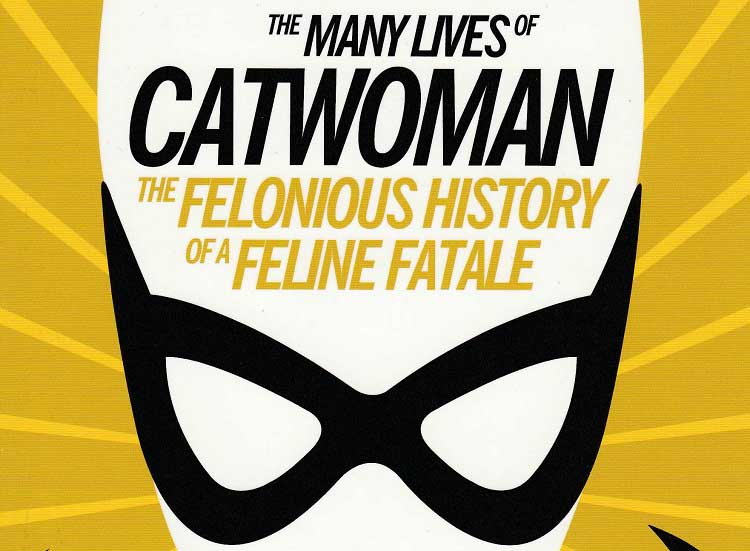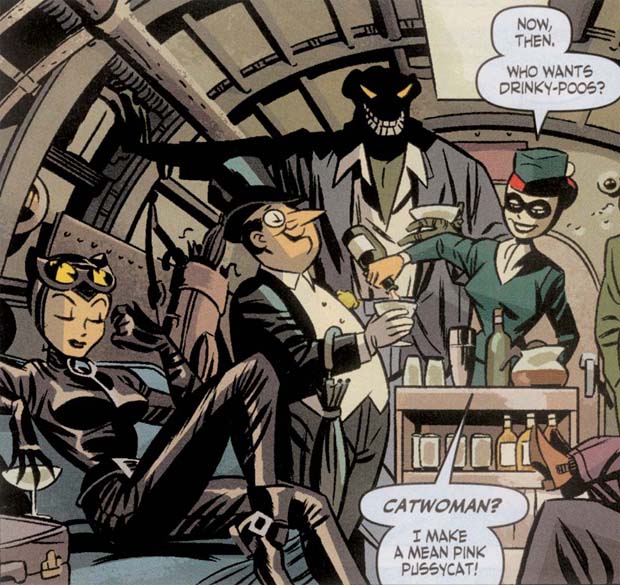
So. You think you know Catwoman?
I did too.
Thief, antihero, the only person to truly confound the world’s greatest detective. Campy when it suits, vicious when necessary, a dangerous and sexy woman with a rogue’s soul. A cultural icon who dances just close enough to the margins to fascinate while ultimately, usually, choosing to do the Right Thing.
And Selina Kyle is all of those things.
She is also so much more.

People often forget comics are a reflection of the prevailing culture in which they’re written, be they intended to reinforce or subvert elements of that culture. Overlooking the deeper layers of the medium is easy to do, especially for folks who don’t partake as regularly, or as widely, as those of us who have an expensive weekly habit that puts us on a first name basis with the staff at our LCBS.
Tim Hanley educates readers in the importance of remembering that fact throughout his slim, information-packed, The Many Lives of Catwoman: The Felonious History of a Feline Fatale. Hanley’s research not only organizes and clarifies Catwoman’s history, it places each of her incarnations in historical context as relates to both current events and comics culture, drawing a detailed portrait of a character far more complex and nuanced than I ever realized. Hanley shows us Selina’s origins in the popular femme fatale of the 1940s, her transformation into a villain in the wake of WWII and the rise of the super girls. Her role as the only thing in the world capable of corrupting the otherwise incorruptible and the backlash that turned her into little more than a damsel with an enormous, and often ogled, set of breasts. Her rise is the rise of women’s lib and her fall is post-WWII expectation and Gamergate.

I’ve said it before and I’m sure I’ll say it until the day I die under a landslide of back issues: comics are fun. Comics are magical. But a story executed in the medium of comics is not, by virtue of being a comic, kid stuff. Comics have taken on Nazis. Misogyny. Racism. Islamophobia. Electoral politics. Sexual Assault. Sometimes they’ve done well. Sometimes they’ve done very very poorly but that doesn’t change the fact our heroes, and our villains, are reflections, of us (the collective us). The majority of those “us”s, at least where Catwoman has been concerned, have been men with agendas, the most common of which has been to maintain male dominance, through gaze and by other means, in the medium and the industry.
I’m far from naïve but I think I believed we’d come further.
Or perhaps I simply hoped I had.

The Many Lives of Catwoman is a reminder that while female characters, comic fans, and writers and artists in the industry have won hard fought progress, we have a long way to go before we’re truly equal. That it’s up to us, as fans and as writers, to demand change, to fight for it, and to clamor for its persistence. Maybe comics will change society and maybe society will change comics. Maybe the transformation will draw inspiration from both.
Put on your ears and claws, though, friends. It’s going to be a bumpy heist.
The Many Lives of Catwoman: the Felonious History of a Feline Fatale by Tim Hanley (Chicago Review Press) is available now.
(GeekMom was provided with a review copy of the book)



